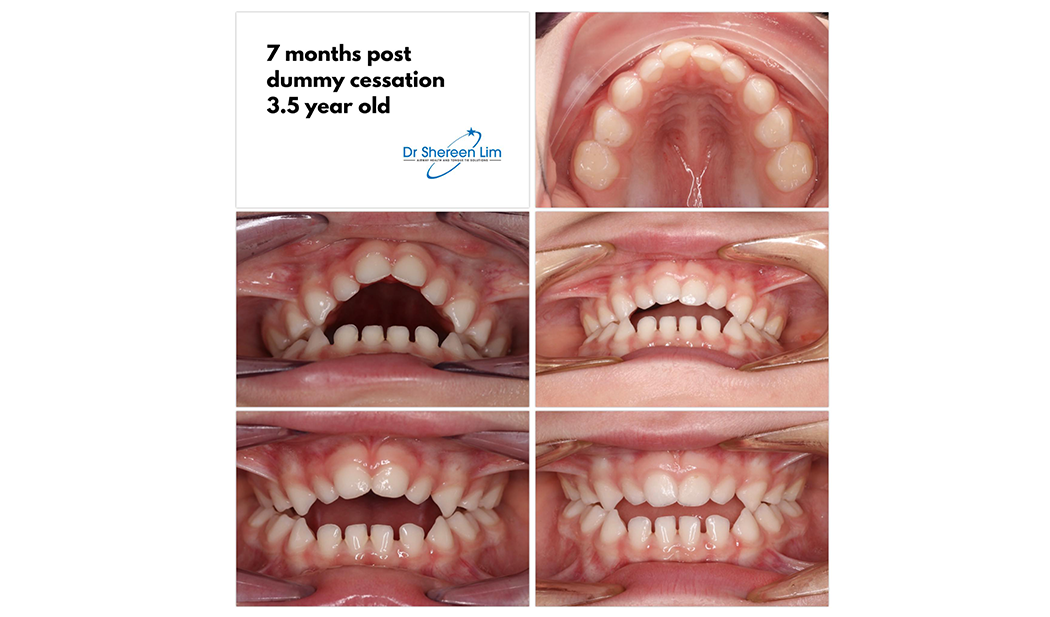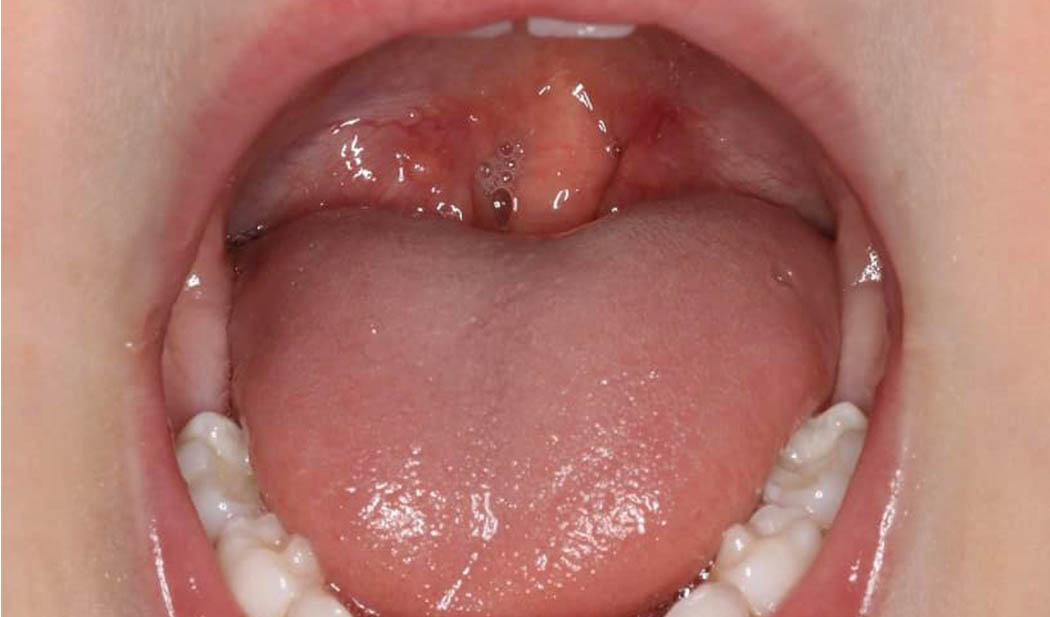It is a common assumption that white coating on an infant’s tongue is thrush.
But in this case, the thick coating on the back of the tongue is milk remnant. It reflects the middle to back portion of the tongue is not elevating properly against the palate to allow proper suction during feeding and swallowing.
Sometimes, like in this bub, it can be related to a “posterior” tongue-tie. In anatomical terms, “posterior” means towards the back, so a posterior tongue-tie is one that restricts normal mobility of the middle to back half of the tongue.
These tongue-ties are sometimes mistakenly called “mild” tongue-ties, however when normal suction is restricted this can result in quite significant symptoms including poor weight gain, or reflux-like symptoms related to altered swallowing and excessive intake of air. The more correct description would be more “hidden” tongue-ties.
This bub’s diagnosis of posterior tongue-tie was delayed despite significant stomach distension, and ongoing concerns with weight gain. Part of the reason it was not considered was that there was a history of a tongue-tie snip shortly after birth.
When the tongue is lifted for a thorough visual assessment, it is possible to see there is scarring of the attachment connecting the undersurface of the tongue to the floor of the mouth. This is restricting normal tongue elevation, and the milk remnant is very well localised to the area of the tongue that is tethered or unable to lift.
In contrast, the white coating in thrush would not have such a well circumscribed appearance. It often appears on the cheeks, and palate too.
I once saw a baby who was admitted to hospital following an allergic reaction after administration of anti-fungals for white coating on the tongue. These anti-fungals will not make any difference to a child who actually has milk remnant.
The take-home message, and one to share is if you see a white coating on the tongue, rule out oral dysfunction and milk remnant before medicating.
















